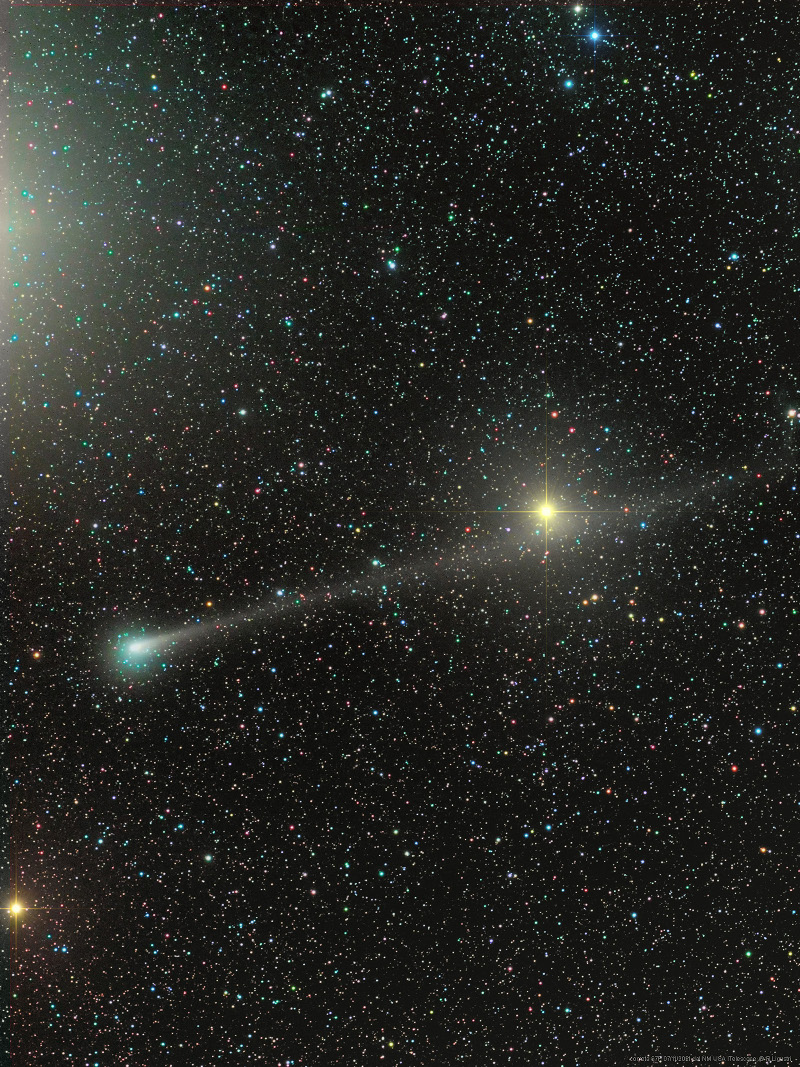2021年11月13日
Rosetta’s Comet in Gemini
Image Credit & Copyright: Rolando Ligustri (CARA Project, CAST)
Explanation: Returning along its 6.4 year orbit, periodic comet Churyumov-Gerasimenko (67P) is caught in this telescopic frame from November 7. Sweeping past background stars in the constellation Gemini the comet’s dusty tail stretches toward the upper right to Upsilon Geminorum. Also known as Pollux, Beta Geminorum, Gemini’s brightest star, shines just off the upper left edge of the field-of-view. Churyumov-Gerasimenko reached its 2021 perihelion or closest approach to the Sun on November 2. At perigee, its closest approach to planet Earth on November 12, this comet was about 0.42 astronomical units away, though it remains too faint to be seen by eye alone. The well-studied comet was explored by robots from planet Earth during its last trip through the inner solar system. It’s now famous as the final resting place for the historic Rosetta spacecraft and Philae lander.
Tomorrow’s picture: What that was.
双子座方向的罗塞塔彗星
影像提供与版权: Rolando Ligustri (CARA Project, CAST)
说明: 这幅摄于今年11月7日的望远镜影像,捕捉到循着6.4年周期轨道回归的丘泽彗星(67P)。在拍照的当时,这颗彗星掠过双子座背景恒星的前方,尘尾向右上的五诸侯四伸展。而双子座的最亮星北河三,则紧贴在视野的上左缘之外。丘泽彗星在2021年11月2日,行进到最靠近太阳的近日点,于11月12日,来到最近地球、间距约为0.42天文单位的位置,不过其亮度仍太暗肉眼不得见。这颗饱经探索的彗星,在它上次造访太阳系内围时,有源自地球的探测船来访。后来并成为罗塞塔太空船和飞垒号着陆器,最后的栖身之地。
明日的图片: What that was.







